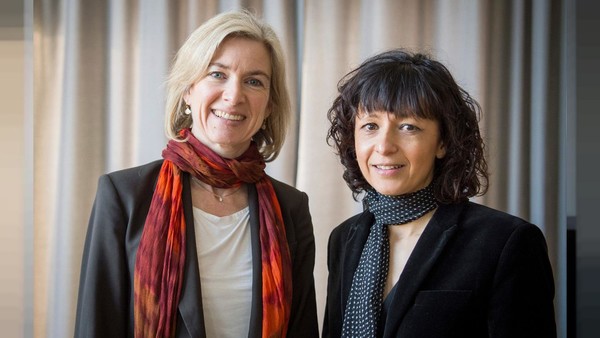Not many people have heard of the term “clustered regularly interspaced short palindromic repeats”. Its acronym CRISPR, however, has been emphasized to an extent that even the laymen of science have heard of it. Considering the drastic improvements brought by the development of CRISPR technology, it’s not unexpected for its developers Jennifer Doudna and Emmanuelle Charpentier to be awarded this year’s Nobel Prize in Chemistry for their development of the CRISPR-Cas9 system.

Born in Washington DC in 1964, Jennifer Doudna moved to Hilo, Hawaii when she was seven. And there, Doudna was fascinated by the beauty of nature. The diversity of Hawaii’s ecosystems was enough for her to grow an appreciation for nature, as well as science. Doudna recounts her first experience of scientific discovery to be during the summer she spent with Don Hermes, a family friend and a biologist at the University of Hawaii who taught her how to investigate fungi. This thrill of discovery and her newfound interest in life put her on the path to becoming a biochemist. In her pursuit of knowledge, Doudna had the privilege of working with esteemed figures in the field. Completing a bachelor's degree in chemistry at Pomona College, she went to study biochemistry at Harvard University under Jack Szostak, who was awarded the Nobel Prize in Psychology or Medicine in 2009. After her postdoctoral training under the supervision of the 1989 Nobel Prize winner Thomas Cech, she became an assistant professor at Yale University, which later led to her current job at University of California, Berkeley as a professor of biochemistry and molecular biology.
Emmanuelle Charpentier’s interest in nature and science was cultivated by her parents. She recalls her father — who was a park ranger — teaching her the scientific names of plants as one of the moments that taught her to truly love science. She completed a bachelor’s degree in biochemistry and a graduate degree in microbiology at the Pierre and Marie Curie University in Paris. She did her graduate and postdoctoral research in a lab at Institut Pasteur, which was where she realized that she wanted to become a researcher. She then moved to the US to become a research associate at the Rockefeller University, New York University’s Langone Medical Center, and the Skirball Institute of Biomolecular Medicine. Currently, she is a director at the Max Planck Institute for Infection Biology.
Doudna and Charpentier, who together developed the new CRISPR method, emerged at the center of a revolution in the field of biochemistry. The technology is superior to previous methods of gene editing in that it is cheaper, more accurate, and more efficient. It opens up doors to infinite possibilities, including but not limited to more personalized medical services, new treatments, and novel research methods for debilitating diseases.
However, this breakthrough placed the two scientists in the center of an ethical debate. CRISPR has the capability to edit human genome, which means human embryos can be genetically modified with further research. In 2018, Chinese biophysicist He Jiankui announced his creation of the world’s first gene-edited babies using CRISPR technology. These experiments are not just ethically controversial; their safety and social impacts are yet to be sufficiently accounted for. As a result, Doudna, Charpentier, and their colleagues promoted a moratorium on the editing of the human genome in 2015 and also laid out guidelines to prevent reckless alteration of embryos until further exploration of the technology.
Despite the ethical concerns, Jennifer Doudna and Emmanuelle Charpentier Nobel Prize in Chemistry for their contribution to the development of gene editing on October 7. This year marks the first time that a science Nobel prize was awarded to a team of women.

